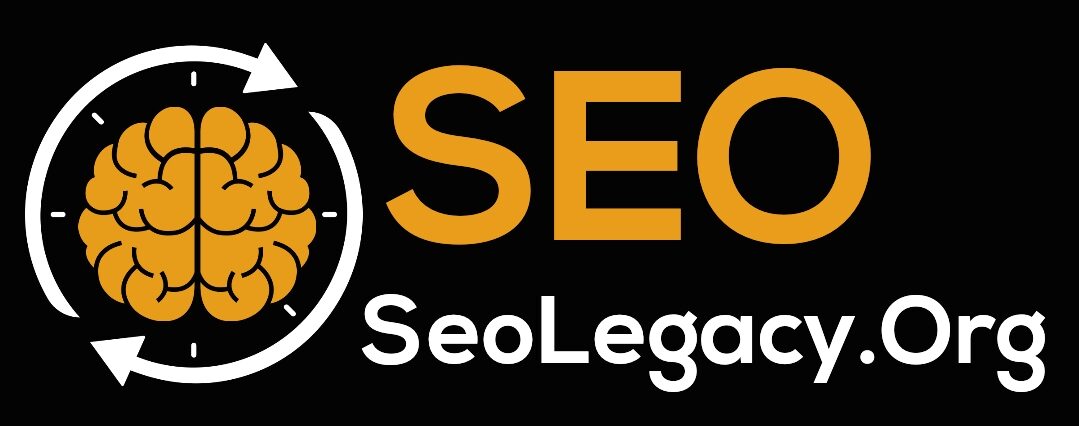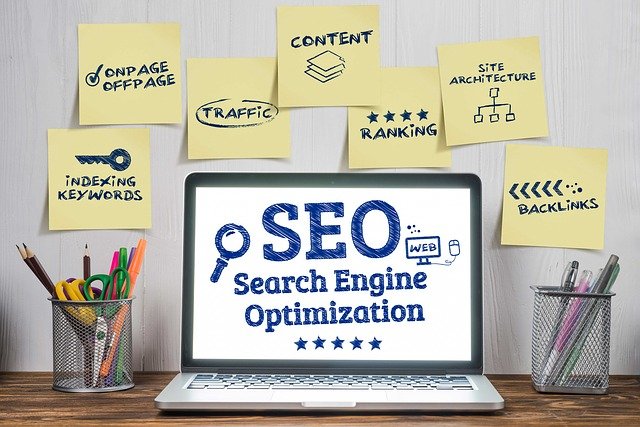Where Should Your SEO Budget Be Spent?
Backlinks? UX? Content? When deciding where to put your SEO budget, you should prioritize tasks that make a difference.
Backlinks, or incoming links, are still important for SEO. But Google is losing interest in them more and more. Since Googlers have reiterated this for years, we are aware that the latter is accurate.
Duy Nguyen, a member of Google’s search quality team, said the same thing in November, explaining why link building campaigns are a waste of time and money and pointing you in the right direction for your SEO budget:
“… you likely shouldn’t squander your cash in spamming links. That money is crucial to the development of a fantastic website with an excellent user experience and useful content.
However, I do not believe that focusing solely on content and user experience with your SEO budget will result in organic search results. In most markets, simply targeting links won’t cut it either.
A well-balanced SEO budget is what you need. Maintaining that equilibrium is not always simple.
You need to prioritize tasks that make a difference if you want to get the most out of your SEO budget. Read on to find out how.
Backlinks’ “good old days” are not yet over.
When I started doing SEO in 2004, there were a lot of empty websites on Google. I quickly realized that those projects were carried out by dishonest contractors.
“SEO spammers” have been employing a variety of strategies to generate links to their otherwise meaningless websites. You either spam or do SEO, in my opinion. By definition, you can’t negatively optimize. Things break or you fix them.)
The main utilization of such “over-upgraded” destinations, as Google later strategically called them, was to bring in cash for their proprietors – frequently SEOs themselves who might make them for partner income and automated revenue.
At the end of 2022, Google released a new update for link spam that addressed:
- (Accurate) match anchor text links.
- Links of no use.
- Links in other languages.
- Other unnatural connections
According to Google, “any credit passed by these unnatural links are lost” when a link is considered spammy.
Thank God for the end of common link spam!
All things considered, backlinks are as yet a positioning variable. However, Google is able to “rank the most relevant and useful results for all queries” instead of removing sites with unnatural link profiles from the search engine results pages due to its “robust ranking signals.”
Keep a significant portion of the budget dedicated to linkable assets and outreach that will eventually result in links by updating the E-A-T concept in December to ensure that authors with proper first-hand “experience” rank higher in SERPs.
Your content ought to be so exceptional that it will naturally attract links. Spending more money on content marketing may be preferable to investing in link building.
It will be a waste of money to build links to sites without content or with shallow content. On the other hand, high-quality content may naturally attract links.
UX as a ranking factor for Google
Ranking factors based on user experience (UX) are nothing new. A paradigm shift occurred when Google added UX ranking signals to its ranking algorithm several years ago.
Prior to that, simple HTML pages and the ugly websites with the worst interfaces ranked highly. Nowadays, both human quality raters and artificial intelligence (AI) algorithms are able to identify which websites are popular with users and which are simply built to rank.
You are forced to. It is now impossible to ignore actual visitors. It won’t work with old SEO strategies. Simply having visitors to your website does not guarantee that everything will work out as planned.
Writing compelling and descriptive meta descriptions and titles is the first step in creating websites that are easy to find and use. To meet the expectations of searchers and Google, you must consider a number of UX aspects:
- Findability: Content clients can’t find nearby is less inclined to get slithered and filed. Important pages should be linked at the top, not hidden in the footer.
- Time to load: Despite being a significant component of Google’s Core Web Vitals, it began as a minor ranking signal and is still ignored by many websites. I’ve seen site speed represent the deciding moment locales. Consider decreasing outsider scripts and picture document sizes. ( WebP is an option for large images.)
- Look and feel: Google will not like a page that has a lot of ads above the fold and is hard to use because the interface is cluttered. Give your content room to grow. Enhance the formatting of your text and keep your website’s elements to a minimum.
- Readability: Do you fill your content section almost entirely with tiny, hard-to-read fonts? It’s not just you. Still, many websites are hard to read. Google is aware of this and will no longer display them at the top of search results. Your fonts should be larger. Fill in the blanks. Make particular points.
- Incentive: What exactly does your website have to offer its visitors and what does it cover? Many sites still keep it a little secret. The “x simplified” motto is better than a kick in the pants than nothing, however in a perfect world, your novel selling recommendation is expressed obviously and concisely. Any other way, Google may not understand what’s going on with your site, particularly in the event that it’s just about “viral substance.”
These are merely good UX practices. When you take care of those and the following financial plan is accessible, you can contribute more.
Meeting the needs of people with disabilities, who make up about one in four Americans, is still a priority for the majority of websites. Accessibility also affects people without disabilities. Some less obvious examples are as follows:
- People who have poor vision but are not considered to have a “vision impairment.”
- individuals otherwise in good health who are unable to focus or stare at glaring screens for extended periods of time and suffer from migraines or headaches that come and go.
- Parents who are multitasking (for example, a parent who is holding their child with only one arm.)
Consenting to WCAG and ARIA norms for site openness likewise works on the slithering and ordering process.
Why? In a lot of ways, Google is still the “blind five-year-old.” The websites are not seen by the bots in the same way that humans do.
The ever-increasing significance of content This should come as no surprise to anyone who has followed the development of the internet, particularly Google search. Google gives preference to content that is:
- Evergreen.
- Fresh.
- High quality.
- Helpful.
Given the significance of content, shouldn’t the SEO department be eliminated and the geeks replaced with writers and photographers?
All things considered, not really quick.
To a degree, publication connects (those given by genuine essayists, editors and distributers) impact the positioning of a website page on Google indexed lists.
Content must still attract links in order to remain visible. There is far too much low-quality and mediocre content available online. The majority of competitive queries have dozens or hundreds of websites competing for attention with content that is similar. The best way to figure out which one of those articles is really useful is by seeing who suggests them all through the web.
Without a doubt, while putting resources into Web optimization, content is an unquestionable necessity. However, you should steer clear of spending money on generic, rehashed content that was only written for Google bots to digest. That time is almost finished.
Google considers content quality in addition to the helpful content system. They want to reward useful content for people looking for inspiration, solutions, and answers.
“Let’s add some SEO content in the footer for Google” was a phrase I used to hear frequently.
Your SEO budget for 2023 should not include this so-called “SEO content” strategy. That is comparable to throwing away dollars.
Alternately, concentrate on assets that can be linked to or, even better, link magnets. What distinguishes the two?
The first type is linkable, but it still needs public relations or outreach, whereas the second type has truly outstanding content that draws links like a magnet.
How to spend your money on SEO after 2023
SEO is a multidisciplinary approach, so you can’t just focus on building links and ignore everything else. Priorities for your website and online presence as a whole must be established. Think virtual entertainment!)
Technical SEO, such as crawling and indexing, is not the only thing that can be done with the SEO budget. SEO must be approached holistically or you will fail.
SEO includes social media and content, in addition to search engines.
Avoid thinking strictly in terms of SEO.
A common client objection I hear is, “Yeah, but that’s not SEO,” whenever I suggest improving the user experience or writing content for SEO. I only need your SEO services.
In 2023, this “strictly SEO” strategy is pointless.
Adopt a holistic approach to website optimization. Meeting the requirements of searchers is more important than “feeding the bots.” Every year, Google gets closer to reflecting human expectations, and I anticipate that 2023 will be a significant leap in that direction. It has been in the works for a long time, and the time has come.
The ideal scenario is one in which you receive a comprehensive audit of your website or web presence—including social media accounts—rather than having to pay upfront for an SEO audit before getting started.
Give SEO priority to actual tasks.
- Web development, information architecture, and user experience design are all components of the information architecture.
If you respond “no,” you continue to think “strictly SEO.”
Even in conventional SEO strategies, the aforementioned activities still have a place.
Internal linking, which has the potential to influence a website’s indexing and crawling, is related to internal architecture.
A well-thought-out user experience design makes sure that things are easy to find, read, load quickly, and look and feel nice.
Allow SEO pros to assist “other” teams.
Most organizations are not sufficiently large to have the option to manage a committed Website optimization group. Assuming you’re fortunate, you will have a Search engine optimization expert in the advertising office. However, many depend on outer organizations or autonomous experts as opposed to paying for an in-house Web optimization. For a number of years, I have been a “hands-on” freelance SEO and consultant.
What I have discovered is that Search engine optimization specialists frequently get dealt with like outsiders from space when defied with a generally settled business order.
Advice from website audits is frequently implemented with only a minimal amount of effort, if at all. When dealing with a lot of different stakeholders, many things get lost or aren’t understood.
SEO best practices are frequently treated as an afterthought and freelance SEOs are sometimes treated as the lowest level in the hierarchy. They may not even have contact with those in charge of putting the changes into effect in some instances.
In point of fact, SEO professionals ought to be treated with respect because they are like angels who distribute wealth among the various teams.
Dole out a particular Search engine optimization financial plan, regardless of whether you have a Website design enhancement in the group. The SEO professional should then be free to “spend it” on the other teams.
The content and PR/outreach tasks should receive the funds if your technical SEO foundation is sound.
Or, if your website’s content is excellent and has received numerous incoming links, but no one can locate you, your technical SEO might be to blame.
Is your website incredibly slow, your content isn’t in the index, or it’s only barely readable? The tech team then receives the larger funds once more. Simply put, you shouldn’t think of the SEO as someone who is competing with members of other teams for funds, attention, and status.
SEO is not at the bottom of the hierarchy or at the top. SEO specialists assist each team in one way or another.
Pay for SEO in proportion to results.
Where you place your SEO wagers frequently depends on evolving relationships, content, and technology.
You can evaluate the success of specific SEO efforts once you have developed a solid content marketing strategy, goals, and key performance indicators (KPIs).
- Did the content appeal to the right people? Did it bring in links?
- After the outreach, did the influencers promote you and link to you?
- Did the alterations to the infrastructure result in faster indexing and a faster website?
That kind of key performance indicator can always be measured to show you what works and what doesn’t.



